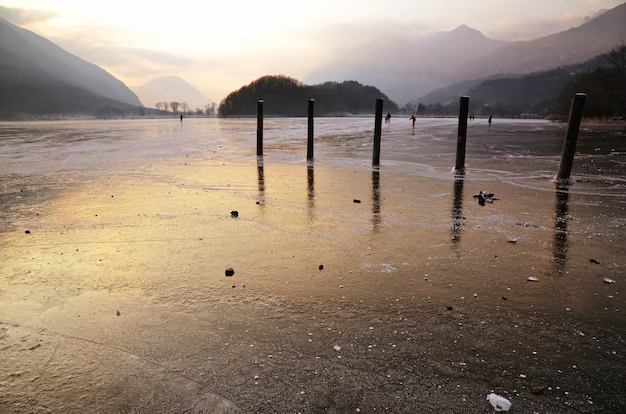Have there ever been flash floods in cortina d’ampezzo italy

Have There Ever Been Flash Floods in Cortina d’Ampezzo, Italy?
Cortina d’Ampezzo, located in the heart of the Dolomites in northern Italy, is renowned for its breathtaking alpine beauty and serves as a popular destination for outdoor enthusiasts year-round. Known for its skiing in winter and hiking in summer, this idyllic town is often seen as a tranquil escape. However, like many regions that are nestled within mountainous terrain, it has been affected by natural events, including flash floods. This article explores whether Cortina d’Ampezzo has ever experienced flash floods, the factors contributing to such events, and the town’s preparedness for future risks.
What Are Flash Floods?
Flash floods are sudden, rapid floods that occur within six hours of a heavy rainfall event or other causes, such as dam failures or rapid snowmelt. They are characterized by their swift onset and potential for significant damage, often catching people and communities by surprise. These floods can occur in both urban and rural areas, particularly in regions with steep slopes, limited drainage systems, and intense rainfall.
Geographical Factors in Cortina d’Ampezzo
Cortina d’Ampezzo’s location in the Dolomites makes it susceptible to flash floods, especially in the summer months. The town is surrounded by steep mountain slopes, and rivers and streams that traverse the region are prone to sudden surges of water when there is heavy rainfall or rapid snowmelt. These factors contribute to the occurrence of flash floods in the area.
History of Flash Floods in Cortina d’Ampezzo
Cortina d’Ampezzo, like many towns in the Italian Alps, has witnessed flash floods in the past. While the area is not typically known for frequent flooding, heavy rainfall or rapid snowmelt can quickly overwhelm local rivers. For instance, in the past, intense summer storms have led to local rivers, such as the Boite River, rising quickly, resulting in localized flooding.
Flash floods in mountain regions like Cortina are often more damaging because of the steep terrain. Fast-moving waters can erode roads, infrastructure, and even homes, especially in areas where natural drainage systems cannot handle the volume of water.
Notable Flash Floods
One of the more significant flash floods in Cortina d’Ampezzo occurred in the summer of 1966. This event was part of a larger flood that affected several regions in northern Italy, including the Veneto area. The Boite River, which runs through the town, swelled due to heavy rainfall and overflowed its banks, causing flooding in low-lying areas. While no lives were lost, the flood caused significant damage to infrastructure, such as roads and bridges.
In more recent years, Cortina has experienced smaller-scale flash floods, often linked to intense summer thunderstorms. These events have caused temporary disruption but have not been as devastating as the 1966 flood. However, these flash floods serve as a reminder of the potential risks posed by extreme weather events.
Climate Change and Increased Risk of Flash Floods
With climate change causing shifts in weather patterns, the frequency and intensity of flash floods may increase. Rising temperatures can lead to heavier rainfall events and accelerate snowmelt, both of which contribute to higher flood risks in mountainous areas like Cortina d’Ampezzo.
In addition to more frequent storms, local communities are increasingly aware of the potential for flash floods due to changing weather patterns. As climate change continues to affect the region, it is likely that Cortina and other towns in the Dolomites will need to adapt to a changing landscape and increased natural hazards.
Preparedness and Mitigation Efforts
Over the years, Cortina d’Ampezzo and the surrounding areas have made strides in flood management and prevention. Local authorities have implemented various flood prevention measures, including reinforcing riverbanks, improving drainage systems, and ensuring that emergency protocols are in place for residents and tourists. Additionally, weather monitoring and early warning systems have been put in place to alert people of potential flash flood risks, helping to mitigate the impact of such events.
The town is also working toward improving resilience against flash floods by collaborating with national and regional authorities to enhance infrastructure and emergency response plans. Building regulations in flood-prone areas have been strengthened to ensure that new construction is more resistant to potential floodwaters.
Conclusion
While Cortina d’Ampezzo is not known for frequent flash floods, the town has experienced such events in the past, primarily due to the steep terrain and sudden storms. Given the increasing risks posed by climate change, it is crucial that the town continues to invest in flood prevention measures and remains vigilant in monitoring weather patterns. Residents, businesses, and visitors must all remain prepared for the possibility of flash floods, even if they are rare. By taking proactive steps, Cortina d’Ampezzo can minimize the impact of such events and continue to thrive as one of Italy’s most beautiful and popular mountain destinations.



